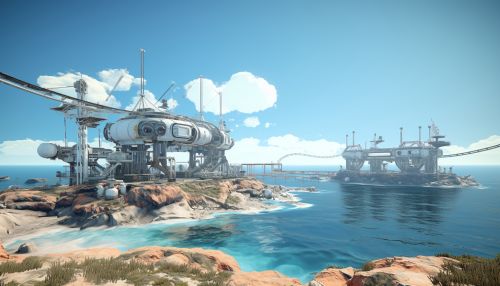Coastal Engineering
Introduction
Coastal engineering is a branch of civil engineering concerned with the specific demands posed by constructing at or near the coast, as well as the development of infrastructure that can withstand the harsh natural conditions of the coastal environment. The discipline involves the understanding and application of meteorological, oceanographic, geological, and geotechnical principles to ensure the longevity and safety of structures built in these challenging environments.


History and Development
The history of coastal engineering dates back to ancient times, with early civilizations recognizing the importance of managing coastal areas for navigation, defense, and commerce. The Romans, for instance, were known for their advanced harbor construction techniques, using hydraulic concrete to build durable structures that could withstand the powerful forces of the sea.
In the modern era, the field of coastal engineering has evolved significantly, incorporating advanced technologies and methodologies to address contemporary challenges such as climate change, sea-level rise, and increasing coastal populations.
Principles of Coastal Engineering
Coastal engineering is a multidisciplinary field that integrates various scientific and engineering principles. Some of the key principles include:
Meteorology and Oceanography
Understanding the meteorological and oceanographic conditions of a coastal area is crucial in coastal engineering. This includes studying the patterns of waves, tides, and currents, as well as the impact of weather conditions on these factors.
Geology and Geotechnics
The geological and geotechnical characteristics of the coastal area, including the type of soil, the presence of rock formations, and the stability of the ground, play a significant role in the design and construction of coastal structures.
Structural and Hydraulic Engineering
Coastal engineering also involves the principles of structural and hydraulic engineering. This includes the design of structures that can withstand the forces exerted by waves, currents, and weather conditions, as well as the application of hydraulic principles to manage the flow of water in and around these structures.
Coastal Structures
Coastal structures are specifically designed and built to withstand the harsh conditions of the coastal environment. These include:
Seawalls and Revetments
Seawalls and revetments are structures built to protect the coastline from erosion and flooding caused by waves and tides. They are typically constructed of concrete, stone, or other durable materials.
Breakwaters
Breakwaters are offshore structures that are designed to protect harbors, anchorages, and marinas from the impact of waves. They can be floating or fixed structures.
Groynes
Groynes are structures built perpendicular to the shoreline to prevent longshore drift and stabilize the beach. They are often constructed of wood, concrete, or stone.
Jetties and Piers
Jetties and piers are structures built into the sea from the shore. They serve various purposes, including providing access for boats, facilitating navigation, and supporting recreational activities.
Coastal Processes and Management
Coastal engineering also involves understanding and managing coastal processes, including:
Coastal Erosion and Sediment Transport
Coastal erosion and sediment transport are natural processes that can significantly impact the stability of coastal structures and the integrity of the coastline. Coastal engineers work to understand these processes and develop strategies to manage them effectively.
Sea-Level Rise and Climate Change
With the ongoing threat of climate change and sea-level rise, coastal engineers are increasingly focused on designing and implementing adaptive strategies to protect coastal communities and infrastructure.
Coastal Zone Management
Coastal zone management involves the integrated management of coastal resources, balancing the needs of development with the need to protect and preserve the coastal environment.
Challenges and Future Directions
The field of coastal engineering faces several challenges and opportunities for future development. These include:
Climate Change Adaptation
As sea levels continue to rise due to climate change, there is a growing need for innovative solutions to protect coastal communities and infrastructure. This includes the development of adaptive and resilient coastal structures, as well as the implementation of nature-based solutions such as beach nourishment and the restoration of coastal ecosystems.
Sustainable Development
With increasing pressure on coastal resources due to population growth and development, there is a need for sustainable approaches to coastal engineering. This includes the use of renewable materials and energy sources, as well as the integration of ecological principles into the design and management of coastal structures and systems.
Technological Advancements
Advancements in technology, including the use of remote sensing, geographic information systems (GIS), and computer modeling, are providing new tools and opportunities for coastal engineers to understand and manage the coastal environment more effectively.
